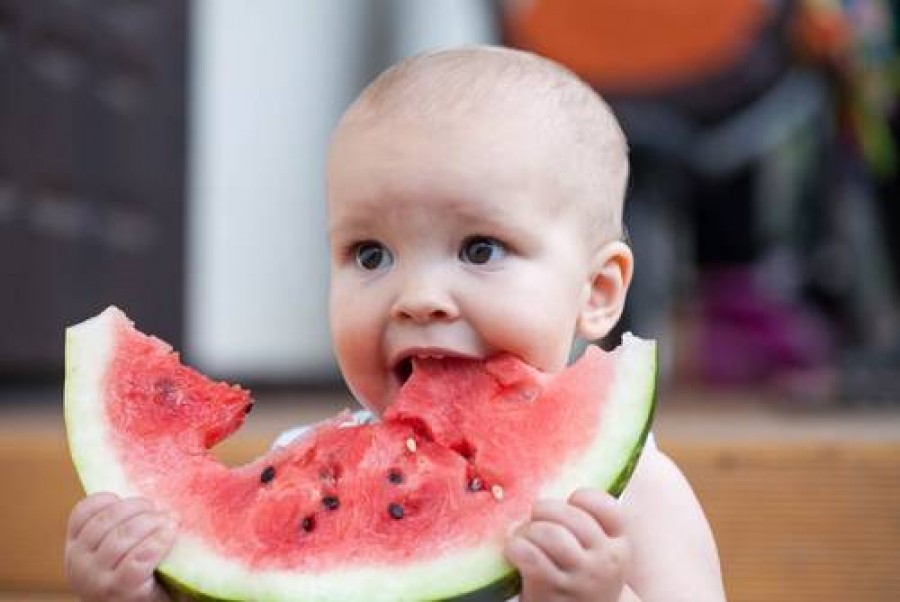Difference Between food Allergy and Intolerance in Infants

Not all children who react badly to certain foods have an actual food allergy. Allergic reactions occur when your baby’s immune system does not accept a food substance, instead treating it as a threat and releasing a chemical called histamine to protect the body.
Histamines cause a range of reactions including rashes, swelling, eye watering and nausea. Hay-fever is a low-level histamine reaction, for example, but a significant proportion of the Australian population (about 18%) is dangerously allergic to a food, medication and/or insect sting. Allergic reactions in infants can range from uncomfortable to extremely dangerous. Depending upon the baby’s immunity, some children show immediate reaction whereas others can take a little time to react to specific food intake.
However, only about 0.4% of children have an anaphylactic allergy, meaning that their allergic response is life threatening. Many people mistake food intolerance for food allergy. They are two different things, but as they have similar symptoms, it can be confusing and worrying.
When your baby’s body is unable to digest a food item,which makes their digestive system upset, this means your baby is intolerant to that particular food. Temporary intolerance to certain foods (such as egg) are common in young children.
You might get the following signs and cues of food intolerance from your baby: the baby starts to vomit or throw up; complain and cry because of stomach pain due to gas; or get cramps. They might also get loose motions and can sometimes suddenly start crying, yelling or shouting at you. Any of these symptoms can suggest that there is some problem with your baby’s health. Severe allergic reactions, or anaphylaxis, have much more severe symptoms including rashes, swelling and difficulty breathing.
Although the symptoms of mild allergy and intolerance can be similar, you shouldn’t treat them in the same way. A food allergy is much more dangerous for your baby’s health than food intolerance. It is extremely important to learn and recognize the difference between them and treat them accordingly.
Common Food Allergies in babies
The majority of food allergies in children (around 90%) occur because of following foods:
- Protein-rich food like egg, fish and other seafood
- Grains like wheat and soy, seeds and corn
- Dairy products like milk and yogurt
- Fruits like berries
- Nuts – especially peanuts
Common food Intolerance in babies
Nowadays, a large number of children are affected by lactose intolerance. This occurs because their digestive system does not digest the types of sugars found in cow dairy products (such as milk and yogurt).
Fortunately, as more and more lactose allergies are identified among Australians, it’s getting easier and easier to buy lactose-free alternatives. These include milk, cheese, yogurt, ice-cream etc. made from dairy alternatives (such as oat, almond, rice and soy milks) as well as speciality lactose-free dairy products made from cow milk, with the difficult-to-digest sugars removed.
Some children also experience intolerance to food additives such as sulphites. This can cause them mild or severe difficulty in breathing.
Another very common and popular type of allergy is gluten allergy, which can be experienced as a long-lasting disease called celiac in children. However it is not a life-threatening disease,and its primary symptoms are discomfort. In some children and teenagers with undiagnosed celiac disease, mild malnutrition can result over the long term because the gut lining has a difficult time absorbing nutrients.
Managing Food Allergies in babies
Start maintaining a list of food that your child is allergic to. Note down the symptoms your child shows of allergy. Write down the possible steps to manage the situation. Prepare for an emergency situation in case the symptoms should ever develop into anaphylaxis. Always read the ingredients before buying any food for the baby.
If you feel that your child has a significant allergy, you can get your baby tested for food allergies. Consult a good paediatrician to get your child diagnosed, and to talk about treatment options.
Managing Food Intolerance in babies
The best way to manage food intolerance is to avoid giving that food to your baby in any form. Try finding substitutes to get that particular nutrient from other sources. For example, for proteins you can replace fish with pulses (also called legumes- this includes lentils, chickpeas and other beans). Nowadays a variety of allergen-free food is available and clearly labelled in mainstream supermarkets, so you can use store-bought food for your baby.
If your baby is accidentally given food from the intolerance list you’ve made up, try to get it flushed out from their body by giving a little rest time to their tummy. Avoiding feeding anything more until their tummy clears out and your baby feels good again.



